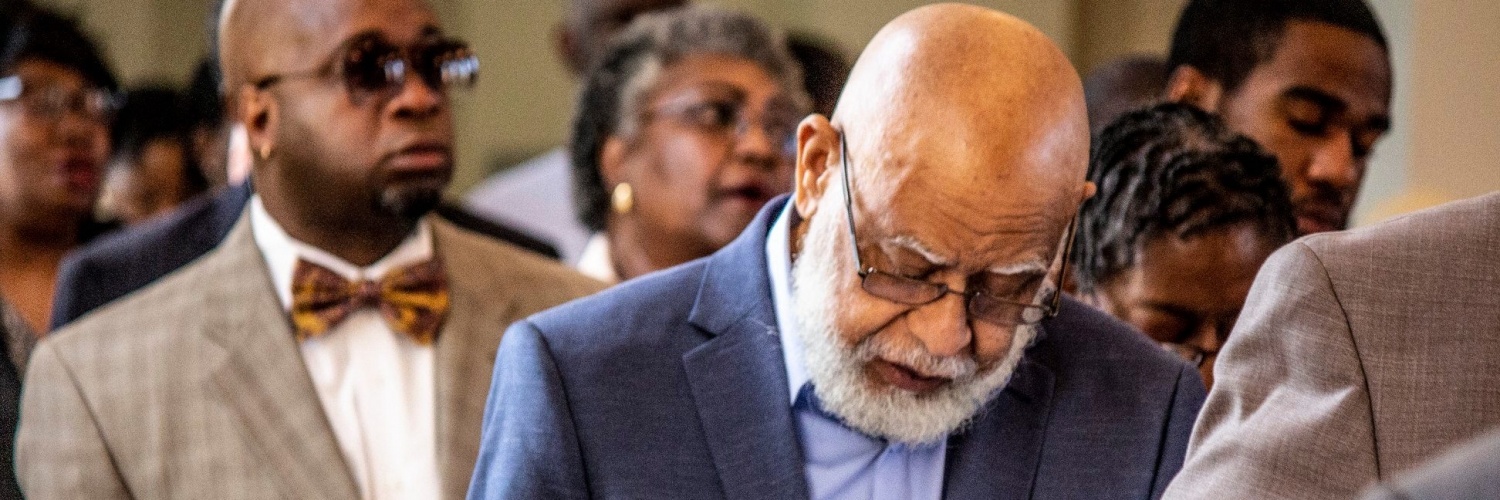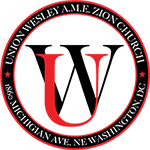Click a tab below to learn more about our history
Our Church History
-
The Union Wesley African Methodist Episcopal Zion Church of Washington, DC, had its humble beginning in Georgetown in 1844. A climate of racial prejudice experienced in the Mt. Zion Methodist Church, led a small group of men and women desiring religious freedom to withdrew and form their own independent church.
This small group of courageous men and women – Gassaway Waters, Isaac Johnson, Charles Simmons, Carl Carusoe, Charity Wilson, and Eliza Wilson, held church service in the home of Gassaway Waters on the corner of Twenty-Eighth and Olive Avenue, NW. Because of the number of people who joined them in worship, it became necessary to seek larger accommodations.
The group relocated to Twenty-Third Street between L and M, NW in 1846, on which there were several small framed houses. Because of prevailing attitudes of racial prejudice, the framed houses were destroyed by fire. The faith of these brave men and women were not daunted or destroyed by this terrible act of terrorism. Refusing to give up, they looked to God in prayer, kept on working, and their prayers were answered. The blessing came in the form of a young black architect named Calvin Brent, who lived in the community. Mr. Brent designed and constructed a new church on the same site. A red brick, two story church was completed in 1848. It was later dedicated as the Second Colored Wesleyan Church.
The Second Colored Wesleyan Church operated independently for a number of years, and was accepted into the African Methodist Episcopal Zion Church on August 26, 1884. Its first pastor was the Reverend Wallace Brown. During his pastorate, the name of the church was changed to the Union Wesley African Methodist Episcopal Zion Church.
A parsonage was constructed on property acquired adjacent to the church on Twenty-Third Street, NW in 1919. Under the leadership of the Reverend C.C. Williams, a Senior Citizens Home for its senior members was founded. The Senior Home existed for many years, but due to the depression in 1933, residents were transferred to the Stoddard Baptist Home in Washington, DC.
Union Wesley A.M.E. Zion Church has served as a station on the Underground Railroad for slaves escaping to the North. B. F. Grant, a faithful member of Union Wesley Church, Frederick Douglas, and Sojourner Truth, helped to spearhead the Underground Movement. Here slaves were taught the skilled trade of carpentry to be used in their quest for freedom.
The Reverend Dr. George L. Smith was appointed pastor of Union Wesley in 1960. By 1967 because of urban renewal, many neighborhood residents began to relocate. Recognizing the signs of the time, Dr. Smith and congregation decided that it was in their best interest to relocate. A new church was located and purchased in the Avondale community in North East Washington, DC, our present site on 1860 Michigan Avenue, N E.
Union Wesley African Methodist Episcopal Zion Church has been led by many outstanding pastors in her rich history to include Reverend Frank W. Alstork - 1929-1944. In 1944 he was elected to the office of Bishop in the African Methodist Episcopal Zion Church; the Reverend William A. Steward – 1944 - 1952. In 1952 he was also elected to the office of Bishop in the African Methodist Episcopal Zion Church; the Rev. Dr. George L. Smith – 1960 – 1982; the Reverend Dr. Wesley W. Bowden – 1982-2005; the Rev. Dr. Alvin T. Durant - 2005 - 2020, and our current pastor appointed in 2019, the Rev. Dr. Brian S. Relford, Sr.
AME Zion Church History
-
The African Methodist Episcopal Zion Church emerged out of the first Methodist Episcopal Society established in New York City, among whom were several Black persons, in response to the growing prejudice endemic in the church.
As the John Street Church grew popular and influential, and as the numbers of Black parishioners increased, they began to experience discrimination within the church. Black parishioners were segregated in the balcony of the church; were not permitted to participate in Holy Communion and prayer until after white parishioners had finished; and were denied the full privileges of membership that included ordination for those members who were called to preach.
In 1796 James L. Varick and about thirty other Black parishioners of the John Street Methodist Church petitioned Bishop Francis Asbury to hold separate meetings at the church. They did so until 1801, when they built their first church called Mother Zion. They continued to be led by a white minister of the John Street Methodist Church until 1820, when they officially voted to withdraw from the Methodist Episcopal Church and published their own Book of Discipline. In 1822, James L. Varick became the first superintendent.
The church became known as the “freedom church” for its strong stands against slavery. Members included Harriet Tubman, Sojourner Truth, Katherine Harris, and Frederick Douglas. The early fathers and mothers taught the church and community about the ideals of freedom, and encouraged them to rely upon God and their own resources to make a difference in their lives and the lives of others.
We are called African because our forefathers refused to relinquish their heritage, we are called Methodist because we have a method to our organization, we are called Episcopal because we have a system of governance, and we are called Zion to distinguish us from other Methodist bodies (e.g. United Methodist Church, African Methodist Episcopal Church, and the Christian Methodist Episcopal Church, etc.).
The African Methodist Episcopal Zion Church (AMEZ) has 1,276,622 members and 3,125 congregations worldwide. There are 141 Annual Conferences, 12 Episcopal Districts, and 3,002 Clergy serves 2,703 Parishes.
Ecumenically, the Church is a member of the National Council of Churches of Christ (NCCC) and the World Council of Churches (WCC). In addition, the AME Zion Church is active in the Congress of National Black Churches, and the World Methodist Council.


 Copyright of Union Wesley AME Zion
Copyright of Union Wesley AME Zion




